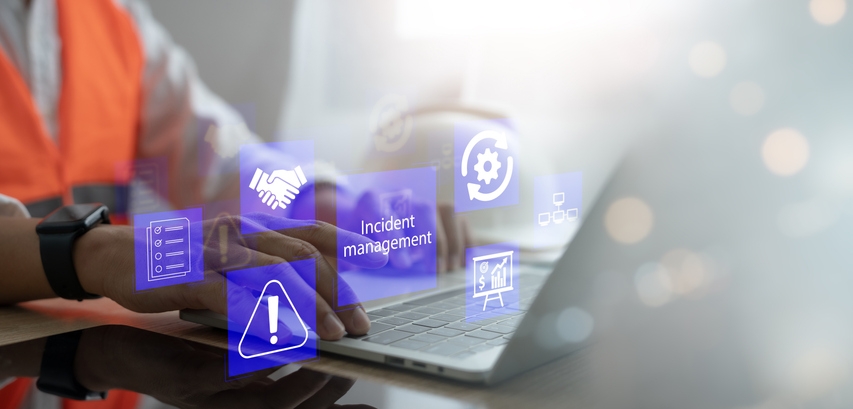Disaster-Proof Your Event: 10 Steps to a Bulletproof Logistics Contingency Plan
Discover key strategies for creating a comprehensive event logistics contingency plan to ensure smooth operations. Read more to prepare for any scenario.

Introduction: How to Build a Logistics Contingency Plan
In the fast-paced world of event planning, one unexpected disruption can throw everything off. Whether it's a last-minute vendor cancellation, a power outage, or an unpredictable storm, your event logistics contingency plan can make the difference between chaos and a successful event.
Following risk management best practices, such as conducting a thorough risk assessment and having backup vendors on call, helps prevent last-minute failures
This guide breaks down exactly how to prepare for and respond to potential risks—with practical steps, real-world examples, cost insights, and backup strategies tailored to modern events.
1. Conduct a Risk Assessment That Actually Helps You Respond
A thorough event logistics contingency plan begins with a risk assessment that goes beyond guesswork.
A useful assessment identifies both high probability risks and critical situations with low likelihood but catastrophic impact—think fire hazards, data breaches, or crowd-related injuries. The key is to focus not just on what might go wrong, but how you’ll respond promptly if it does.
How to Execute It Well:
- Start 4–6 months in advance. Build a live document that updates as your event planning evolves.
- List identified risks in categories: technical issues (AV, internet connectivity, platforms), weather-related issues, health and safety concerns, vendor failures, and traffic congestion.
- Assign each risk a probability and impact score. Multiply to find your high priority risks.
- For each top risk, map out a response strategy, backup vendors, or alternative options—not just vague actions.
- Establish clear communication channels within your event team and with relevant stakeholders, through efficient project management,, so that no time is wasted in critical moments.
Estimated Budget: ₹10,000–₹25,000 (if using consultants or tools)
Advanced Tip: Incorporate live dashboards or mobile-accessible risk matrices into your event management platform so onsite teams can stay informed in real time.
2. Build a Multi-Layered Data Backup Process (That You Can Actually Recover From)
Too many event planners think having files in Google Drive or an Excel sheet counts as data backup planning. But when systems crash during check-in or critical data gets lost due to human error, the absence of a structured backup process becomes painfully clear.
What a Solid Backup Strategy Looks Like:
- Incremental backup: Automate daily updates of only new or changed data—ideal for registration systems or evolving floor plans.
- Differential backup: Use this weekly to keep a fast-restoration copy of everything modified since the last full backup.
- Cloud storage: Protect against physical damage or ransomware by storing copies securely off-site.
- On-site external storage: Keep a portable drive with the most important data (e.g., attendee lists, venue maps, presentation decks) for instant access during the event.
Steps to Execute:
- Use event-grade software that supports automated backups.
- Store at least one backup copy in three places: on-site, off-site, and in the cloud.
- Assign a dedicated team member to verify the last backup daily during the week of the event.
- Include backups of vendor contracts, event details, communication channels, and access credentials.
- Conduct a monthly mock restore to check integrity—don’t wait until you actually need it.
Estimated Budget: ₹5,000–₹30,000 annually (varies by platform and volume)
Advanced Tip: Document who is trained in appropriate backup systems, and ensure they’re part of your on-site event team. The best plan fails if no one knows how to activate it.

3. Prepare Your Outdoor or Hybrid Event for Weather Failure Points
Unpredictable weather remains one of the top disruptors for both outdoor events and hybrid events with outdoor components. But instead of crossing your fingers, the right meticulous planning can protect your operations and your budget.
Real Planning vs. Wishful Thinking:
- A strong backup plan includes contracts with tent providers, access to indoor space, or pre-negotiated rescheduling options.
- Monitor forecasts daily from 7 days out, but also prepare for unexpected microbursts or extreme heat with misting stations or cooling lounges.
- Ensure that every event venue has designated shelter zones and reroute maps in case you need to adjust layouts due to wind or water.
- Pre-design signage or QR-accessible maps that reflect venue adjustments—print them in advance.
Steps to Execute:
- Choose venues in a smart manner, try to get the ones that offer indoor contingency space or can accommodate large temporary structures.
- Maintain contact with tent suppliers and alternate indoor sites, even if not confirmed.
- Distribute heat/humidity safety guides to staff (important for attendee safety and well being).
- Create a visual checklist for setup teams: waterproofing, electrical safety, load-bearing limits.
- Review backup equipment (e.g., rainproof AV, floor mats, elevated wiring) and assign responsibilities.
Estimated Budget: ₹20,000–₹80,000 depending on scale and climate
Advanced Tip: Incorporate weather-related risks into every vendor discussion, especially transport, logistics operations, and catering (think food safety under extreme heat).
4. Build Backup Systems for Power and Connectivity
Large-scale or hybrid events rely heavily on audio visual equipment, live feeds, and digital tools. Even a short power outage or internet glitch can derail your entire event. Planning robust backup systems isn’t optional—it’s a key element of logistics strategy.
Execution Steps:
- Identify all critical systems (AV, control room, registration desk) and list what fails if power/internet drops
- Rent backup generators and UPS units to cover priority areas
- Install wired connections with 5G/4G fallback routers; Wi-Fi is not reliable in high-density areas
- Conduct a full test of all backup systems 24 hours before the event, with a dry-run for switching over
- Set up offline support kits: printed event schedules, floor plans, and attendee lists
Estimated Budget: ₹25,000–₹1,00,000+ depending on venue size and equipment
Pro Tip: Invest in dual connectivity lines—one from a different provider—as a safety net for virtual components and streaming.

5. Proactively Address Health and Safety Hazards
Logistics risk is not just operational—it directly impacts attendee safety and well-being. Health and safety concerns include not just fire hazards, but also crowd management, food safety, and response to minor injuries or panic situations.
Execution Steps:
- Perform a site-wide safety audit and run a fire drill with venue and vendor teams
- Inspect all high-risk areas: kitchens, cabling, AV zones, and exit routes
- Ensure food vendors follow hygiene protocols, temperature control, and allergen labeling
- Provide basic safety training to all team members and volunteers—covering evacuation, CPR, and managing large crowds
- Place visible signage and equip zones with extinguishers, first aid kits, and security checkpoints
Estimated Budget: ₹15,000–₹40,000 depending on training scope and gear
Pro Tip: Include a visible “Your Safety Is Our Priority” board with emergency contacts and safety protocols—it builds trust while reducing panic in actual scenarios.
6. Establish Clear Communication Channels for Emergencies
An event contingency plan is useless without fast and effective communication channels. During adverse weather conditions, sudden evacuations, or technical failures, every second counts.
Execution Steps:
- Assign response leads for each identified risk—weather, tech, crowd safety, etc. Ensure each knows their exact duties
- Use walkie-talkies or encrypted group chat tools for on-ground real-time messaging
- Share a crisis comms flowchart: who informs whom, how quickly, and using which platform
- Prepare pre-approved messages for public communication in case of weather delays, last-minute venue changes, or security alerts
- Run a 20-minute mock emergency drill with your core event team two weeks before event day
- Ensure all event staff and volunteers receive appropriate training in emergency protocols, crowd management, and equipment handling
Estimated Budget: ₹2,000–₹10,000 for communication tech and rehearsal costs
Pro Tip: Avoid relying only on mobile networks—dense crowds can slow them down. Use radio or wired systems wherever possible.
7. Tackle Traffic and Transportation Issues
Even the best-planned logistics operations can collapse if attendees or vendors are stuck in traffic. This is especially critical in hybrid events where timing and tech depend on everyone being in sync.
Execution Steps:
- Monitor real-time traffic and roadblock data for the venue area
- Push live traffic alerts to attendees and suppliers via app or SMS
- Stagger vendor arrival times and share load-in schedules to avoid bottlenecks
- Set up GPS tracking for key transport vendors, shuttle buses, and emergency response units
- Prepare a map of alternate access routes to manage overflow or blockages
Estimated Budget: ₹10,000–₹50,000 depending on tracking tools and communication systems
Pro Tip: Place volunteers or marshals at high-traffic intersections near the venue to guide supplier and shuttle flow.
8. Establish Security and Data Breach Protocols
Event planners must now think beyond physical security measures. With digital tickets, online payments, and attendee data at stake, every event must have a plan for cybersecurity and data leaks—especially in green logistics systems using smart tech.
Execution Steps:
- Secure digital systems using multi-factor authentication and encrypted backups
- Define an escalation path with legal support for data breach response
- Train staff and vendors to recognize phishing, suspicious behavior, or hardware tampering
- Limit system access to essential team members only
- Create a rapid-action checklist for suspected breaches
- Cloud storage and incremental backups are essential for protecting critical data and avoiding data loss in case of system failure
Estimated Budget: ₹10,000–₹50,000 depending on IT support and legal fees
Pro Tip: Do a mock data breach simulation one month before the event to identify weak spots in your tech stack.
9. Regularly Review and Update Your Contingency Plan
In fast-changing event management environments, a stale plan is as risky as no plan. Updating your contingency framework ensures you’re prepared for natural disasters, new health codes, or last year’s overlooked gaps.
Execution Steps:
- Schedule a review meeting before every major event or quarterly for recurring series
- Include all relevant stakeholders—from venue managers to security leads—when reviewing or updating your event contingency plan.
- Update your plan to reflect new venue layouts, regulations, or tech dependencies
- Gather feedback from past events and run-throughs to refine risk scenarios
- Revisit training checklists to keep all teams aligned with updated responsibilities
- Share updated plans across stakeholders (venue, vendors, volunteers)
Estimated Budget: Minimal (internal coordination task)
Pro Tip: Use versioning tools (Google Docs, Notion, etc.) to keep an accessible record of all changes and timelines.
10. Maintain Redundancies in Key Vendor Contracts
In the logistics industry, backup vendors are your insurance policy. One no-show caterer or AV partner can derail even the most sustainable or well-planned green event. Smart event planners always have a Plan B.
Execution Steps:
- For every critical service (AV, catering, transport, security), pre-identify a backup vendor
- Add service-level agreements (SLAs) and clear turnaround clauses in all contracts
- Ensure contracts outline what happens during last-minute cancellations or failures
- Store all vendor details in a centralized, accessible place for quick handoff
- Test backup vendors on smaller events or non-critical tasks to validate quality
Estimated Budget: ₹0–₹20,000 unless holding fees or partial deposits are required
Pro Tip: Use platforms that support multi-vendor integration and can automatically reassign services when defaults occur.

Final Thoughts: Don’t Just Plan—Plan for the Unexpected
An event logistics contingency plan isn’t an optional document—it’s the essential part of professional event risk management. From data backup to weather-related issues, anticipating such risks will save money, protect your brand, and keep your event on track.
Use the tools, steps, and budget breakdowns above to build a resilient, future-ready event risk response.
CTA: Want to simplify contingency planning for your next event?
Try Azavista’s event automation tools designed for event planners who don’t want to leave things to chance. From backup systems to real-time alerts, we help you prepare, respond, and recover—fast.
More Event Management












